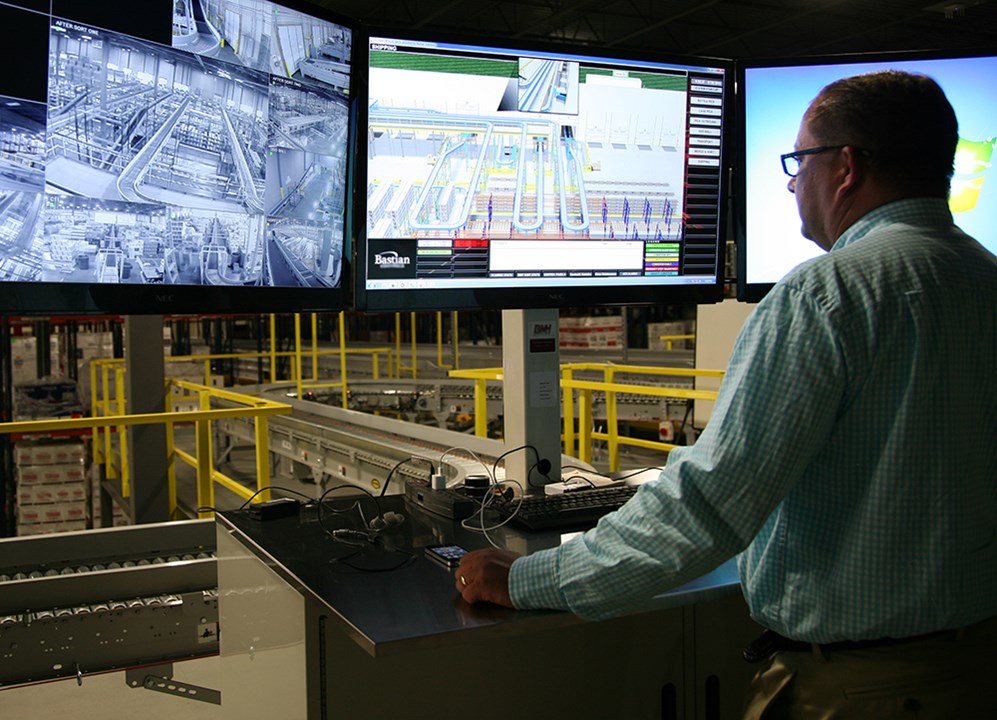
Business Intelligence and the Benefit of Software Analytics
Eric Cameron & Chris Bratten | 21 September 2020
'Business Intelligence' and 'Analytics' are buzzwords in our society. Any google trend search will show the rise of these buzzwords over the last 15 years. Everyone wants to make smart business decisions based on the data that they have; and everyone wants to know that they have made smart business decisions - and how to improve on those decisions. This is especially true in the automated warehousing industry as these systems need to produce an ROI to justify the expense of implementation.
The Building Blocks of Intelligent Decision-Making
All business planning and decision-making should be made on the data that is available to the decision-makers (anecdotal evidence should always be backed up by actual data). The key to any intelligent decision is data - but not just any data… good data. Good data is a product of two things: extensive data that is also reliable
Top-tier warehouse execution systems (WES) can track every decision and every action made in the warehouse. A bin-picking robot had a fault? The WES captures the fault, what time the fault occurred, how long the fault lasted, what time the robot was operational again, and what caused the fault. Your operator marked a shipping container for QC when performing a pack operation? The WES captures which operator, what the order was, what time they marked it for QC, why they marked it for QC, and when it was scanned at an exception utility. These examples show how a WES can track an entire system - every container, every order, every product, every operator, every machine. All data points captured and accessible in a data warehouse for reporting and analytics. One of the things that I've learned in my time in the industry is that you don't know every question that you will have about a system until the system is actually running. Even two years after a system goes live, new questions will arise that require troubleshooting and decision-making. The best thing that you can do to anticipate the 'we don’t know, what we don't know' - and capture all the data in an automated system - that way when you do 'know what you don't know', you have the necessary tools and abilities to make decisions for improvement.
Unreliable data leads to bad decision-making. How do you know that your data is reliable? It's tested. Data collection starts with software - the true 'brains' behind any automated distribution center. When introducing a new WES into your facility, one thing that is often overlooked during System Readiness Testing or User Acceptance Testing is data collection and reporting. The main goals of SRT or UAT usually reside in software functionality, and not necessarily the metrics or reporting for that functionality. Verifying that the WES business intelligence (BI) and reporting suite is accurate is a key part in gaining the confidence of end users of the system.
Making the Most of the Data
While good data is the cornerstone of intelligent decision-making; how do teams capitalize from that data and produce meaningful decisions and therefore meaningful results?
Besides collecting all the data in a data warehouse, a WES will also utilize the data warehouse for BI and reporting. Transforming data into relevant information for your team is critical to understanding your warehouse efficiency. BI and reporting should answer these two questions:
- How can operational managers understand and troubleshoot specific issues within the warehouse? For example…
- Why did this container divert to the exception lane?
- How many available locations do we have to sort to in the putwall?
- How many active waves remain for the shift?
- Who picked the most lines out of the AutoStore today? This week?
- How is the system performing against Key Performance Indicators (KPIs) for the warehouse? For example…
- What is the throughput for each functional area in units? Lines? Orders?
- How many orders were processed during peak?
- Is my operation effectively balancing work across all areas?
Nothing is more frustrating for your business than not understanding what your business is doing. The WES provides a full suite of tools in order to provide a deep understanding into how the warehouse is functioning and performing. Top-tier WES systems use years of experience to determine what standard reports and tools are offered for each WES system. In addition to experience, Bastian Solutions also leverages its consulting division to understand your business before the facility is even built. Consulting conducts a full analysis on your business and its needs, and consulting and software work together to create customized reports and tools for all KPIs that were identified before the warehouse is even built. Software works closely with consulting (who has already identified key metrics for system performance), so our software team is able to integrate specific KPI metrics into each report. This allows easy identification of areas where performance is lagging. This ensures that you can hit the ground running with a full suite of business intelligence tools beginning on day one of your operation.
Chris is a Logistics Consulting Manager at Bastian Solutions, based in Louisville, Kentucky. He has a Bachelor of Science in Mechanical Engineering from Rose-Hulman Institute of Technology and a MSME from Purdue University. Since starting with Bastian, Chris has developed and maintained strong relationships with his clients; designing solutions and supporting system integrations.
Eric is the vice president of sales for Bastian Solutions' Exacta supply chain software.
Comments
No comments have been posted to this Blog Post
Leave a Reply
Your email address will not be published.
Comment
Thank you for your comment.